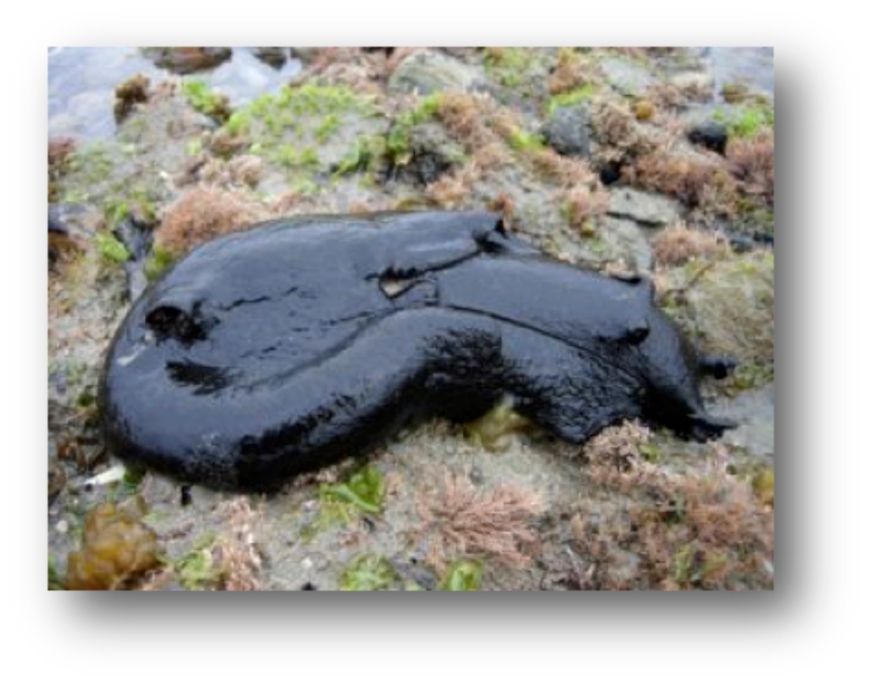Black Sea Hare (Aplysia vaccaria)
Contributed by Dr. Bonnie Becker,
Modified by TPERP Dan Wieder


Where found: Low tide zone up to upper tidepools. Similar to California Sea Hare but is deep purplish black instead of brownish gray.
Interesting facts: A sea hare is a mollusc, related to snails, but without the conspicuous outer shell. They have a tremendous internal shell. It does not squirt “ink” in contrast to the California Sea Hare. This species has few natural predators and holds the size record for sea hares, up to 30 inches in length and up to 35 pounds. The species name is descriptive, referring to its cow-like attributes, since vaccaria refers to cow-house or pasture in Latin.
Adaptations: Aplysia breathe with the help of two fleshy flaps that extend over the back and are flapped and create currents to force water over the gills.
Food: Aplysia eat algae. They sense the food at a distance and cut it up with their radula. They use three stomachs, two of which have grinding “teeth” inside.
Life history: Aplysia is hermaphroditic, with both male and female sex organs. Fertilization is internal and copulation lasts several hours to several days. Mating occurs year-round, but is concentrated in the late spring to late fall. Eggs are deposited in stringy yellow masses, with on the order of 80 million eggs per mass. One egg mass was unraveled in a lab and was 1/3 of a mile long! Within 12 days the eggs hatch to free swimming larvae that are planktonic for approximately a month. Settlement usually occurs on or near red algae. The animals grow quickly, and within a year are usually full-grown. They usually don’t live much longer than a year.
Classification:
Phylum: Mollusca (Soft-bodied animals with external shells or modified internal shells)
Class: Gastropoda (Snails, Limpets, Sea hares, Nudibranchs, etc.)
Subclass: Opisthobranchia (Nudibranchs, Sea hares, Sea slugs, etc.)
Order: Anaspidea
Family: Aplysiidae

Last revised 24-Nov-17

